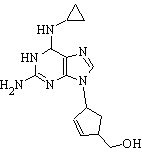New drug combinations to attack HIV, the virus that causes AIDS, and an injectable product to correct facial fat loss have been added to the list of approved treatments for people with HIV.
The FDA has approved two fixed-dose combination treatments for HIV-1 infection: Epzicom and Truvada. The control of HIV and AIDS generally requires simultaneous use of three or more drugs from different drug classes. Combination products bring together different HIV and AIDS drugs in a single medication or co-package to help make treatment regimens less complicated for people to follow.
"Simplifying treatment regimens by reducing the number of pills and times per day patients need to take them provides significant public health benefits," says Dr. Lester M. Crawford, Acting FDA Commissioner.
Epzicom and Truvada are indicated for use in combination with other antiretroviral drug products from different classes for the treatment of adults with HIV-1 infection. Antiretroviral drugs attack HIV, which is a retrovirus, by interfering with the virus's ability to use specific enzymes that it needs to survive.
Epzicom is a fixed-dose combination of two antiretroviral drugs that are approved individually under the brand names Ziagen (abacavir sulfate) and Epivir (lamivudine). Truvada is a fixed-dose combination of two antiretroviral drugs that are approved individually under the brand names Viread (tenofovir disoproxil fumarate) and Emtriva (emtricitabine).
The FDA completed its review of Epzicom, a product of GlaxoSmithKline, in 10 months and its review of Truvada, a product of Gilead Sciences, in four months.
Sculptra, an injectable filler to correct facial fat loss in people infected with HIV, was recently approved under an expedited agency review. Sculptra is the first such treatment approved for a condition Known as lipoatrophy, or facial wasting, a sinking of the cheeks, eyes, and temples caused by the loss of fat tissue under the skin.
Sculptra was shown to produce significant increases in skin thickness, adding volume to facial tissue and restoring shape in areas of the face with fat loss. After an initial treatment series, repeat treatments may be needed to maintain the correction. Studies reported an improvement in the quality of life among those treated and less of the anxiety and depression often associated with lipoatrophy.
Sculptra is an injectable form of poly-Llactic acid, a biodegradable, biocompatible synthetic polymer from the family of alpha hydroxy acids that has been widely used for many years in dissolvable stitches, bone screws, and facial implants.
In studies, patients were given three to six injections of Sculptra at two-week intervals and were followed for two years. The studies showed that the product was safe and that it significantly improved facial appearance. Most side effects were related to the injection itself, and included nodules, redness, swelling, and bruising in the injection area.
Sculptra should be used only in people with HIV by health care providers who are fully familiar with the entire product package insert and product training materials provided by the drug maker, Dermik Laboratories of Berwyn, Pa. The FDA has not approved the use of the product for other indications, such as to treat wrinkles.
It is estimated that 900,000 to 1 million people in the United States are HIV-positive, although about one-third are not diagnosed. Some 50 percent will develop lipoatrophy. An estimated 150,000 to 350,000 people could potentially benefit from the new filler.
COPYRIGHT 2004 U.S. Government Printing Office
COPYRIGHT 2004 Gale Group



